BEHIND THE SCENES – CBD RESOURCES
What Is CBD Oil?
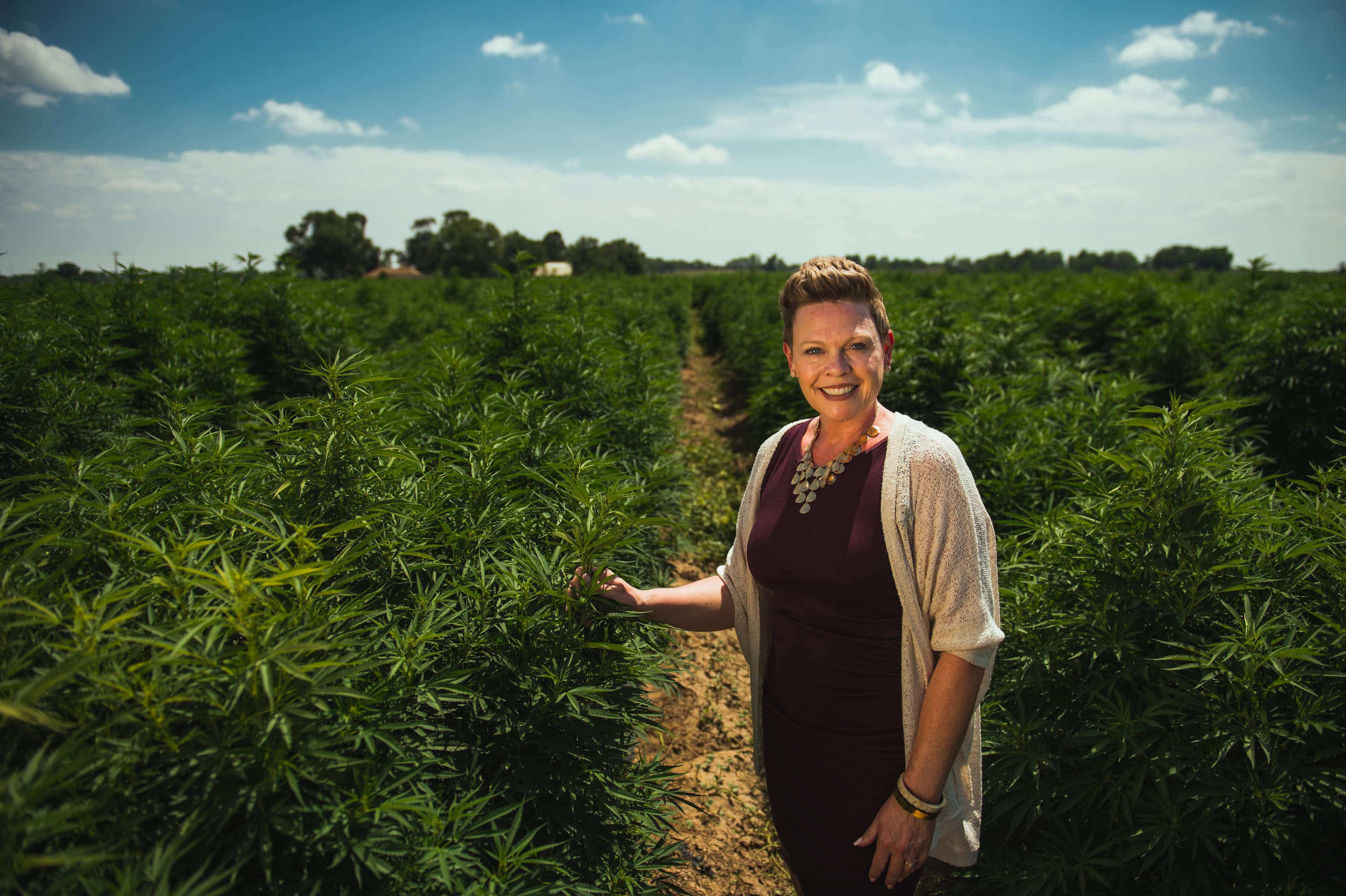
Introduction — The Ultimate Guide to CBD Oil
Cannabidiol (CBD), a compound produced by the cannabis plant, is quickly growing in popularity and headed toward mainstream acceptance. CBD oil is finding its way into a variety of products, from tinctures and drops to CBD-infused edibles and CBD balms, as well as a wide range of cosmetics. CBD oil is even becoming popular among pet owners who wish to help their pets live healthier lives.
With that clarified, let’s delve into The Ultimate Guide to CBD Oil.
This guide is broken up into 5 sections:
In Chapter 1 we’ll discuss some basic information about CBD oil, such as what it is and where it comes from. We’ll also provide answers to some of the most frequent questions asked by new CBD users.
In Chapter 2 we’ll go into some detail about some of the ingredients in CBD oil and how they affect the human body.
In Chapter 3 we’ll delve into CBD’s potential benefits.
In Chapter 4 we’ll go over some of the products that contain CBD oil, and the ways in which CBD oil can be used.
Then, finally, in Chapter 5, we’ll get you started by providing some advice on how to choose the right product for your needs and how to find a trustworthy source.
The information in the first three chapters falls under the heading of “good to know,” but if you’re anxious to get started, it’s not required reading.
If you’ve already started using CBD or have purchased some CBD, we recommend that you skip to Chapters 4 and 5 so that you can make sure you have the right product for you, learn how to properly use it and determine how much you should be taking. Once you’re clear on usage and serving recommendations, you can go back and get better educated on how CBD oil works and why it’s commonly used.
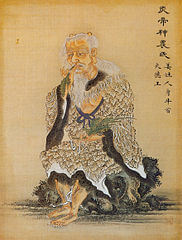 |
In 2737 B.C., as recorded in the first editions of the Pen Ts’ao Ching, Chinese emperor Shen-Nung was using cannabis in topical ointments and teas. As time went on and human civilization progressed, writings espousing the benefits of hemp began to appear in pharmacopeias across Asia. The use of cannabis extracts appeared in the second century B.C. in the writing of Hua Tuo. |
|
Around A.D. 77, the Romans began using hemp extensively in the healing arts. In his writings, a scholar by the name of Pliny the Elder claimed that cannabis extract was helpful for relieving discomfort. In India, cannabis was considered a sacred plant gifted by the gods. The Atharvaveda was considered a storehouse of knowledge that was useful for everyday life. This manuscript details the use of cannabis flowers and seeds in a variety of balms and tinctures. Cannabis has even been found buried in the tombs of Ancient Greeks and Egyptians who also notated formulations for cannabis remedies. |
 |
|
 |
By the sixteenth century, cannabis was being cultivated all over Europe. Hemp was so valuable to society at that time that, in 1533, Henry VIII required all farmers to grow hemp. Many physicians of the age, such as Garcia de Orta and Li Shih-Chen, were documenting the use of hemp extract as a support for appetite and for maintaining wellness. |
| In the 1600s, hemp cultivation came to North American colonies. The colony of Virginia even created laws which mandated the cultivation of hemp by farmers. Similar laws were passed in Massachusetts and Connecticut. Hemp seeds were even considered legal tender and used to pay for goods and services in Virginia, Pennsylvania and Maryland. |
|
 |
A popular medical text of the time called, “Anatomy of Melancholy,” written by Robert Burton, noted that hemp extract was helpful in supporting mood. By the eighteenth century, hemp’s uses were documented in “The New England Dispensatory” and “Edinburgh New Dispensatory”— two highly respected pharmacopeias of the day. As the industrial age was unfolding, a surgeon named W. B. O’Shaughnessy began to extol the virtues of hemp in the American |
| Southwest. A professor at the Medical College of Calcutta, O’Shaughnessy conducted experiments to determine the effects of hemp extracts on animals and humans suffering from rheumatic diseases, cholera, tetanus and hydrophobia. | 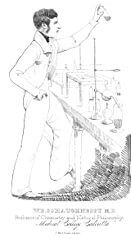 |
By the late 1930s, the war on cannabis erupted, and the cultivation of cannabis became illegal. In 1970, possession of any form of cannabis was banned by the Controlled Substances Act, which listed cannabis — including both hemp and marijuana — as Schedule I substances with no medicinal benefits and a high risk of dependence.
In the late 1960s the mysteries of cannabinoids, including CBD, began to unfold as researchers discovered the role of the human endocannabinoid system in maintaining good health. We’ll discuss this in more detail shortly.
As the 1970s progressed, however, cannabis once again began being used for medical treatment. A quarter of a century later, in 1996, the state of California legalized the use of cannabis for treatment of certain medical conditions, despite the federal ban.
Over the past few decades, there has been an explosion of research into the benefits of CBD and other cannabinoids. CBD has been quickly gaining acceptance in the U.S. as a result of media coverage by respected health experts such as Dr. Sanjay Gupta. The message of CBD’s effects is beginning to reach the masses.
Today, CBD oil is available to most people in the United States and research into CBD’s effects on the human body has ramped up substantially. Modern technology has provided methods of refining and isolating CBD and even increasing the bioavailability of CBD oil through technologies such as nanoemulsions, which make CBD water-soluble and increase its potency.
The demand for CBD is growing so quickly that sales are expected to surpass $1 billion by 2020.
This guide contains information that will help you make educated decisions about why and how to use CBD oil. It is not intended to provide medical advice.
It’s important that the reader seek the advice of a qualified medical professional who is well versed in CBD education before beginning use.
And with that, let’s get started.
Ultimate Guide to CBD Oil Chapter 1:
CBD Oil Basic Information
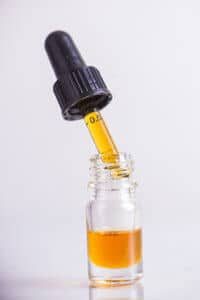 |
CBD oil is a natural oil which is extracted from the flowers and leaves of the cannabis plant. It is used by people all over the world for a variety of purposes. Broad spectrum CBD oil contains a variety of active compounds such as cannabinoids and terpenes, which we will discuss in greater detail in Chapter 2. In each other’s presence, these compounds work even better. Depending on the formulation of a product, it may contain other beneficial components such as omega fatty acids, amino acids, vitamins and minerals. |
Sativa plants are taller and produce more fiber and are therefore the species from which hemp cultivation arose. Indica plants are shorter and bushier and less suitable for farming for either industrial purposes or for production of food, but well-suited for producing medical marijuana.
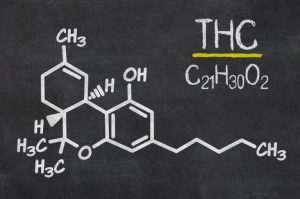 |
Marijuana is high in the psychoactive compound THC, or delta-9 tetrahydrocannabinol, the compound in marijuana that causes a high. Marijuana is rightly considered to be a “drug.” It is cultivated mainly for medicinal and “recreational” purposes. Both indica and sativa strains, as well as hybrids of the two, are used to produce marijuana. |
Hemp is not marijuana. Although hemp does contain some cannabinoids, it has negligible amounts of THC. In fact, in order to be legally cultivated, hemp must contain less than 0.3% THC. Hemp is also grown as an industrial crop for the use of fibers in textiles and even building materials. Most industrial hemp is grown for its fiber and contains relatively small concentrations of cannabinoids and terpenes, so it is not the most desirable source of CBD oil.
While many of the CBD products on the market are produced from this kind of industrial hemp, the CBD oil in Joy Organics products is made from a CBD-rich strain known as PCR hemp. PCR is short for phytocannabinoid rich — it contains as much as ten times the concentration of CBD as generic industrial hemp and only negligible amounts of THC. It does not cause a high.
Joy's friends get updates on new products and special coupons!
For the purposes of this document, we are only concerned with CBD oil produced from PCR hemp. We are not concerned with THC-containing cannabis oils made from marijuana, nor are we concerned with extracts of industrial hemp which have low levels of cannabinoids and terpenes.
To summarize, there are a variety of products which contain varying levels of CBD as well as other cannabinoids and terpenes.
- Hemp seed oil — Oil produced from hemp seeds, does not contain CBD.
- Raw industrial hemp extract — A low-quality source of CBD oil.
- Raw PCR hemp extract — A high-quality, full or broad spectrum product which is rich in CBD and contains the naturally occurring compounds in hemp, including cannabinoids and terpenes.
- CBD concentrate or distillate — A full spectrum or broad spectrum product from which unwanted compounds have been removed.
- CBD isolate — Purified CBD that does not contain other beneficial terpenes and cannabinoids.
- CBD-rich oil/Phytocannabinoid-rich (PCR) — Either full spectrum or broad spectrum CBD concentrate or oil infused with CBD concentrate.
- Broad spectrum oil — An oil rich in CBD and the beneficial cannabinoids and terpenes present in hemp EXCEPT for THC.
- CBD-infused — Generally refers to a product infused with pure CBD, but is also used sometimes to refer to a full spectrum product.
Now that we’ve cleared up these terms, let’s answer some of the most common questions asked by first time CBD users.
One of the main points of confusion comes from the fact that the media often uses the term marijuana to refer to hemp and vice versa. This raises other issues, the most common of which are whether or not it causes a high or if it has any side effects. Let’s answer each of these questions in brief.
THC acts upon particular receptors in the brain, which changes brain chemistry and therefore alters consciousness. CBD does not trigger these receptors. In fact, it may actually prevent them from reacting to THC and thus minimize its effects.
CBD oils produced by some manufacturers can contain trace amounts of THC. Joy Organics products, however, are produced using a technology that extracts THC while leaving the other cannabinoids and terpenes intact.
It’s important to note that all human bodies are different and, if taking extremely large amounts of a product, CBD may cause drowsiness.
In order to determine if an effect is an adverse side effect, you need to know what the desired effects are. The effects which are desired by one user may not be desired by another user.
Let’s look at an example of how CBD might work differently for different people. Some people use CBD oil in order to support a good night of rest but may also feel drowsiness during the day. If you want to feel awake during the day, as most do, feeling sleepy would be an unwanted side effect.
Alcohol is a perfect example of a substance with biphasic properties. Below a certain blood level, alcohol provides a stimulating effect and can make its user more active and social, while larger amounts of alcohol can have a depressant effect resulting in unconsciousness.
 |
Yes, high-quality CBD is safe for pets. However, the size and activity level of your pet will determine the optimal serving size. Pets can range in weight from under a pound for rodents to many hundreds of pounds for animals such as horses. Some pets are pretty much sedentary and don’t get much exercise, while others are highly active and have a much higher metabolism. It’s a good idea to talk with a veterinarian who is familiar with CBD’s uses before you give your pet CBD in the form of CBD Dog Treats, CBD Oil Tincture for Pets, or CBD Oil for dogs. |
Ultimate Guide to CBD Oil Chapter 2:
CBD Oil and Wellness
What Are Cannabinoids?
| Cannabinoids are active compounds produced by all cannabis plants. They account for most of the benefits of cannabis. Cannabinoids found in plants are technically called phytocannabinoids. Phytocannabinoids mimic compounds which we call endocannabinoids that are produced naturally by all mammals. | 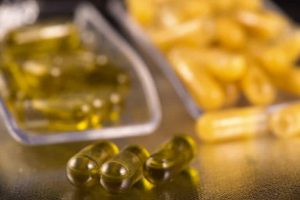 |
- Phytocannabinoids — Cannabinoids produced by plants.
- Endocannabinoids — Cannabinoids produced by human or other mammal bodies.
Other cannabinoids found in PCR hemp include cannabichromene (CBC) and cannabigerol (CBG). Cannabichromene (CBC) is the third most common cannabinoid found in cannabis. Like CBD, cannabichromene is non-psychoactive. Cannabigerol (CBG) is produced early on in the hemp’s growth cycle. Both CBC and CBG are believed to have properties similar to those of CBD.
What Do Endocannabinoids Do?
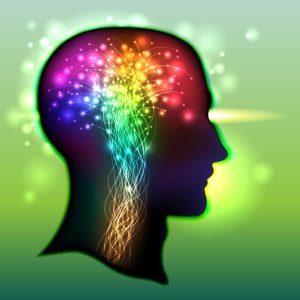 |
Endocannabinoids, those produced naturally by our bodies, are signaling molecules. They are technically called neurotransmitters. Hormones are a more familiar type of neurotransmitter. A vast array of neurotransmitters are produced by the nervous system in response to various states of health and also environmental factors. They interact with receptors found on the surface of cells throughout our bodies. Their job is to instruct a cell to adjust its activities. This can include changing how cells react to other neurotransmitters. |
The brain doesn’t connect with every cell in your body, just like traffic officers can’t connect directly with every car on the road to be able to instruct individual drivers how to behave in every traffic situation. In order to manage traffic, we implement traffic signals. These include street signs, traffic lights, the lines on the road and so on. Traffic signals inform drivers where they can and cannot travel, when they should stop and when they should go and how fast they are allowed to move.
Some of these signals can sense what’s going on in the environment, such as when a car pulls up to a traffic light. The sensor triggers a controller, causing the light to change, thereby changing the behavior of the drivers approaching that intersection.
In the same way, your body’s nervous system connects to a wide variety of sensors to keep track of every system in your body. The signals from these sensors are decoded by the brain and the nervous system. If it is determined that a system has gone out of balance, the nervous system produces neurotransmitters, which travel through the bloodstream and interact with receptors on cells, instructing them to adjust their behavior.
Now that we understand how neurotransmitters work to adjust our cellular activity, let’s take a look at the role of cannabinoids in particular and their role in supporting homeostasis, a state of balance, within the body.
The human endocannabinoid system (ECS) has two components. First is the endocannabinoid receptors found on the surface of cells throughout the body. Second is the endocannabinoids themselves that interact with those receptors.
For example, a well-known endocannabinoid is called anandamide. Anandamide is responsible for the production and uptake of serotonin. Serotonin is often referred to as the “bliss molecule” because levels of serotonin in the body are directly associated with mood. Serotonin is the neurotransmitter that is responsible for “runner’s high.”
The endocannabinoid system is vast and far-reaching. It regulates a wide array of bodily functions, from appetite regulation to sleep patterns, moods, metabolism, immune response, the lifespan of cells and much more.
Below is a list of the most common cannabinoid molecules found in cannabis.
- Cannabidiol (CBD) — The second most common cannabinoid produced by the cannabis plant that is non-psychotropic (it doesn’t get you high).
- Delta(9)-tetrahydrocannabinol (THC) — The primary psychoactive compound in marijuana that gives users a feeling of euphoria.
- Cannabichromene (CBC) — This third most common cannabinoid, also non-psychoactive, is thought to support mood and joint and muscle function.
- Cannabinol (CBN) — Believed to support joint and muscle function and aid a good night’s rest.
- Cannabigerol (CBG) — Non-psychoactive and used to support mood and joint and muscle function.
- Tetrahydrocannabivarin (THCv) — Less psychoactive than THC.
- Cannabidivarin (CBDv) — Similar to CBD in its effects.
- Delta(8) THC — Similar to delta(9)-THC, less psychoactive and may support a relaxed mood.
- THCa and CBDa — Compounds found in raw cannabis that are non-psychotropic.
| Terpenes are a class of volatile hydrocarbon compounds produced by the cannabis plant as well as most other plants. However, cannabis is currently the most terpene-dense plant known to humans. Terpenes readily evaporate at room temperature and our noses are highly sensitive to them. | 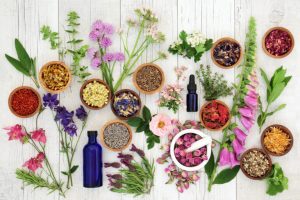 |
In nature, terpenes act as both a repellent for pests and as attractants for pollinators and seed spreaders.
Although terpene molecules are all very similar, each has its own unique scent and flavor. Various combinations of terpenes are responsible for the distinct aromas of cannabis strains.
Terpenes can also have powerful effects on our bodies. In fact, terpenes have been utilized by humans for millennia in what’s commonly known as aromatherapy. For example, the scent of citrus is produced primarily by a combination of limonene and pinene, both of which are thought to elevate mood.
Some common terpenes include linalool, myrcene, caryophyllene, limonene, terpinolene, citronellol and camphene. The traditional uses of these terpenes and others vary, but they include use as support for muscle and joint function, mood and overall wellness.
In cannabis, terpenes are produced in the highest concentrations in the plant’s female flowers. Terpenes also act on cannabinoid receptors and are known to modify the effects of cannabinoids.
The overall effect of the rich combination of cannabinoids and terpenes is known as the entourage effect. In the case of cannabis, these cannabinoids and terpenes work together to produce a range of effects which is thought to be greater than the sum of its individual components.
More research is needed to determine the exact role that terpenes play in the overall effects of CBD oil, but it seems clear that terpenes work in concert with cannabinoids to produce a richer effect than CBD alone.
As we mentioned earlier, some CBD oil products are actually oil infused with pure CBD. These products do not have the added benefits of terpenes and other cannabinoids and do not produce the entourage effect. They are not recommended.
Research Into CBD’s Benefits
The secrets of cannabinoids are vast and they run deep. After many years of study, still very little is known about how cannabinoids interact with the endocannabinoid system as well as other complex organs and systems in our bodies.
But one thing is certain — CBD does have an effect on these complex systems that themselves are not fully understood. Determining the exact mechanisms that are producing CBD’s vast array of effects might take many more decades.
In the meantime, much research is underway, and many studies about CBD’s effects on the human body have already been published.
In this chapter, we’ll take a look at some of the reasons why CBD is being studied.
 |
In 1968, a report written by the UK government’s Advisory Committee on Drug Dependence stated that “the long-term consumption of cannabis in moderate doses has no harmful effects…Cannabis is less dangerous than the opiates, amphetamines and barbiturates, and also less dangerous than alcohol…” That same year, the University of Mississippi was entrusted to grow marijuana for research by the predecessor agency to the DEA. |
| Only two years later, the United States declared marijuana a Class I substance with a high potential for abuse and no medicinal value. Two years after that, in 1972, a report based on a comprehensive study by the Department of Health, Education and Welfare recommended that marijuana be removed from the scheduling system and decriminalized. Then-President Richard Nixon rejected the recommendations. |  |
In 1978, as a direct result of the lawsuit, the National Institute on Drug Abuse (NIDA) began supplying cannabis to several patients whose physicians applied for and received “compassionate use” rights under Investigational New Drug Applications (IND) rules. Most of the medical research done on cannabis has taken place in the 40 years since 1978.
The human endocannabinoid system was discovered in steps. In 1988, the first cannabinoid receptor was found in the brain of a rat. In 1992, researcher Raphael Mechoulam and NIMH researchers William Devane and Dr. Lumir Hanus discovered the first endocannabinoid. These discoveries resulted in a wave of new studies into the effects of cannabinoids.
In 1993, the American Medical Student Association unanimously endorsed a statement calling for the down-scheduling of cannabis to Schedule 2. Since that time and based on reams of data, there have been scores of attempts to pressure the federal government to relent on this matter. So far none have been successful.
Let’s now take a look at some of the research that has been done in the past few decades into the mechanisms and effects of cannabinoids and the ECS.
 |
CBD is commonly used to support emotional stability. Research shows that CBD has an effect on levels of the endocannabinoid anandamide, which we mentioned earlier. Anandamide is produced by the nervous system to stimulate the uptake of serotonin in the brain. Serotonin is often referred to as the “happy molecule” because of its ability to improve mood. |
When your mood is low, you might be dealing with a low amount of serotonin. An increase in serotonin can correspond to an increase in feelings of wellbeing. It all goes back to the endocannabinoid system — a balanced ECS is a happy ECS.
Another common use for CBD oil is to help normal healthy sleep cycles. It’s no secret that a rough sleep usually results in a bad mood the next day, and nobody wants that. Taking CBD before bed may help you roll out of bed feeling fresh and energized the next day.
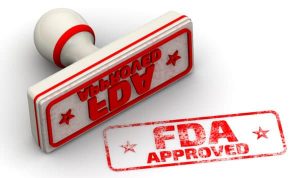 |
After multiphase clinical trials were completed, an FDA panel recently recommended approval of a CBD-based pharmaceutical called Epidiolex for treatment of certain specific and rare types of juvenile epilepsy. |
Another concession by the federal government involves the Department of Veterans Affairs. In mid-June 2018, the Senate Appropriations Committee voted to add an amendment to the Department of Veterans Affairs’ (VA) annual spending bill that would prohibit VA interference in the participation in legal cannabis programs by U.S. veterans. The amendment prohibits the VA from denying any services to veterans who use medical cannabis.
The amendment reverses a VA directive that prevents VA physicians from helping veterans access medical cannabis. It also directs the VA to conduct research into the benefits of medical cannabis using whole plant cannabis and extracts. This would include CBD oil.
Using CBD Oil
In this chapter, we’ll take a look at some of the methods by which CBD is used. We’ll discuss some of the factors involved in determining serving sizes. We’ll also look at the strengths and drawbacks of each method and discuss which methods are better for different situations.
Not all methods for using CBD are equal. Their effectiveness depends not only on the method of consumption and the ingredients in the product, but also on the bioavailability of the CBD afforded by each method.
The bioavailability of any active compound is the percentage of a given serving that ends up being available for your body to use.
In the case of CBD oil, the active ingredients include both cannabinoids and terpenes. However, for the sake of discussion, we’ll talk only about the bioavailability of CBD itself.
A bioavailability of 100% would signify that 100% of the CBD in the product is available to your body. The only way to achieve 100% bioavailability is through intravenous administration — meaning injection directly into the bloodstream.
Every other method of consumption will result in some percentage of the CBD becoming unavailable to the body for various reasons, such as becoming trapped in fatty tissues or metabolized (broken down) before it has a chance to enter the bloodstream.
Each method of CBD oil consumption has a particular range of bioavailability. We’ll discuss these factors next and will also touch on them when discussing the benefits and drawbacks of each method.
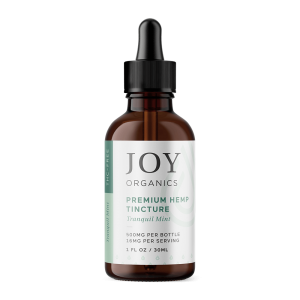 |
A tincture is a liquid — usually an oil or an alcohol base — which has been infused with CBD oil. CBD oil tinctures are taken by mouth. When taken using this method, the CBD in the tincture can be absorbed pretty easily. It is generally assumed that the bioavailability of CBD in tinctures is twice that of edibles — anywhere from 10 to 40%. |
Aside from intravenous injection, the method with the highest bioavailability is inhalation. CBD can be vaporized or atomized and inhaled. The vapor is absorbed into your lungs in the same way that oxygen is. Furthermore, the effects of inhalation are almost immediate. This is because the CBD directly enters your bloodstream directly through the lungs, bypassing the digestive system.
| The bioavailability of inhaled CBD is estimated to range between 25 to 60%. The actual number depends on the ingredients being vaporized and other factors such as how much is inhaled in each puff, how deep it is drawn into the lungs and how quickly it is exhaled. | 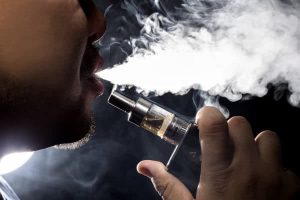 |
Because of unique genetics, no two people react to CBD oil in the same way. Furthermore, factors such as age, health, weight, circulation and metabolism can all affect the timing of the effects of CBD oil.
A factor that can be influenced by all of the above is the number of cannabinoid receptors in the body, how they are expressed and the ability of the body to produce endocannabinoids. An individual who expresses more receptors or produces fewer endocannabinoids may be more sensitive to CBD than someone with an abundance of endocannabinoids or a lack of receptors.
There are also numerous other factors involved such as the type of product being used, how it’s being used and how much is being used. The onset of edibles will typically take longer than that of tinctures, for example.
As we mentioned, the effects of inhaled CBD are virtually instantaneous. Edibles and capsules can range anywhere from 20 minutes to over an hour while tinctures can take up to 20 minutes.
These figures are to be considered general guidelines and will vary from person to person, as we mentioned above.
Some CBD products list a suggested serving size. However, without taking into account all of the variables, the recommended serving size might be far too low or possibly even too high. In particular, the serving size will vary greatly depending on why it’s being used.
A serving that is appropriate for one product might be much different than that of a similar product. This is because various CBD oil products contain varying amounts of CBD. Whereas one product might contain 10mg of CBD per serving, another might contain 50mg per serving.
The most important factor to be considered, however, is that both serving size and duration of use depend largely on the reason the individual is using it. One person might simply be using CBD to support general wellness while another might be using CBD to help maintain a good night’s rest.
Another factor to be considered is whether or not the product being used contains a full spectrum or broad spectrum CBD oil with terpenes. Due to the entourage effect, these types of products reportedly work more effectively than just CBD alone.
Given all of the above-listed factors, determining your ideal serving requires some thinking. Taking too little will not produce the desired effect and will be a waste of time and money. Alternatively, taking more than you need may not provide additional benefits. It will take some experimentation to determine an ideal serving for a particular person.
Here are some general guidelines for determining your ideal serving of CBD oil:
It’s a good idea to put some thought into which product you’re going to use and stick with that product for a while. This allows you to gauge the effects of that particular product. If you switch back and forth between different products, determining a serving amount will be much harder.
When you first begin using CBD oil, it’s a good idea to start with a low serving size. This gives you a chance to determine your body’s reaction to CBD. One option is to start with 1mg of CBD for every 20 pounds of weight. Using this rule, someone weighing 100 pounds should start with 5 milligrams, while someone weighing over 200 pounds can start with 10 milligrams, and so on.
When first using CBD oil, it’s best to start at night — about an hour before bedtime. That way, if CBD has a tendency to make you drowsy, you’re not dragging during the daytime. It’s uncommon for a low serving size of CBD to cause drowsiness, but it’s good to be sure. If you have no issues, then take another serving in the morning. If CBD oil does make you sleepy, then take it at night. Often CBD oil is used to support both nighttime sleep and daytime focus, in which case it can be taken as needed throughout the day.
If all goes well but you have not achieved your desired results, you can try doubling your servings. Each time you increase your serving size, take a few days to make note of how your body feels.
If a rise in serving size produces unwanted effects such as making you drowsy, back off to a lower serving.
CBD is non-toxic. You would have to consume quite a bit of CBD oil before it results in any truly adverse health effects.
However, taking more CBD than needed might cause some unwanted effects such as making you too relaxed for particular activities like work or sports.
Once you have arrived at a particular serving based on the product you are using, it’s a good idea to stick with that product.
CBD is non-toxic. You would have to consume quite a bit of CBD oil before it results in any truly adverse health effects.
However, taking more CBD than needed might cause some unwanted effects such as making you too relaxed for particular activities like work or sports.
Once you have arrived at a particular serving based on the product you are using, it’s a good idea to stick with that product.
Certain methods are better for certain uses. For example, if you’re using CBD to support skin health, you can get it directly by using a topical product. If you’re using a CBD product to support a good night’s rest, a special formulation such as CBD Softgels with Melatonin could be more beneficial than regular softgels.
As mentioned, various methods of use require different amounts of time to take effect. For example, edibles can take upwards of an hour or more to take effect, whereas inhalation methods are virtually instantaneous.
Bioavailability, as we pointed out earlier, is the amount of CBD that actually makes its way into your bloodstream. If time is not a consideration, your main consideration should be value. CBD is not inexpensive like products such as vitamins and minerals. You definitely want to try to maximize the value you get for your money. If a product has only 10% bioavailability, you’re essentially paying five times more for your CBD than if you used a product which has a 50% bioavailability.
Another consideration is how accurate you would like to be with your servings. It’s easy to gauge a serving when you’re taking capsules, for example, but much harder to gauge serving size when vaping since it depends on factors such as how much you inhale and how deeply you inhale it.
With that knowledge, let’s take a closer look at the best uses, pros and cons of individual ways of taking CBD.
Earlier, we discussed the fact that there are a variety of products which makers refer to as CBD oil. These can include everything from raw hemp extract to more refined products to pure CBD-infused oil. There are also a number of types of oil which are used as a base for CBD oil. Some CBD oil products also contain added ingredients such as additional terpenes, essential oils and vitamins.
Tinctures are generally used at home in the morning and the evening, and can also be used at work if your situation allows it.
The downside of tinctures and oils is that they don’t travel well. They can be messy if you’re trying to use them on the go. They also generally come in a breakable bottle with a breakable dropper. If you’re looking for a product to take hiking, for example, tinctures are probably not your best choice.
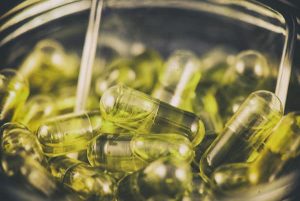 |
CBD oil capsules are generally delivered orally. There are cases where you might want to puncture a capsule for use on the skin, but for the most part, this is an orally administered product. Capsules are made with gelatin, which melts within minutes in your stomach and delivers the entire serving of CBD oil. |
This means that none of it will get absorbed into the tissues in your mouth or throat. And, depending on whether or not you take them with food, very little is likely to make its way through the rest of your digestive system.
Joy Organics products softgels are formulated using a patent-pending water-soluble nanoemulsion technology which encapsulates the active compounds in nano-sized emulsions. The average size of nanoemulsion CBD oil droplets is between 4 and 200 times smaller than the industry standard. This smaller size leads to much higher absorption in the blood and, therefore, results in extremely high bioavailability. Because of this, less nanoemulsion CBD oil is needed to produce the same results as regular CBD oil.
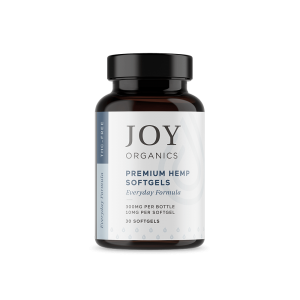 |
As we mentioned, capsules, because they dissolve quickly, will deliver a serving of CBD directly into your stomach. Capsules are also very convenient and easy to use with no mess, and they also allow for exact serving sizes. If a CBD Softgels capsule contains 25 milligrams of CBD, assuming you’re using a reputable manufacturer with good production methods, you know you’re getting a serving of 25 milligrams of CBD. |
One downside of capsules is that they take longer to feel the effects. Also as mentioned, when taken on an empty stomach very little of the CBD will make its way into your body as most of it will be directly absorbed into the lining of your stomach. But this is easily avoidable by taking the capsule with food.
It’s also important to note here that capsules that do not use nanoemulsions have far lower bioavailability than those that do contain nanoemulsions.
|
CBD-infused topicals include skin creams, balms, salves and oils. Once again, these products can be infused with pure CBD, or they can contain a PCR CBD oil. The same rule applies — the products with the full or broad spectrum oils will contain other beneficial cannabinoids and terpenes. Topicals often have a variety of additional beneficial ingredients meant to contribute to the overall effects. |
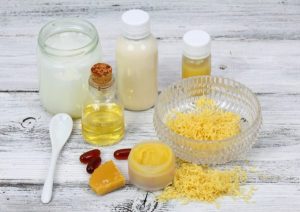 |
For example, skin creams may contain moisturizers, vitamin E, collagen and so on. Pain creams may contain ingredients meant to help the product penetrate deeper into tissues and aid in pain relief. Salves may contain other soothing and healing ingredients such as aloe.
|
Topicals (such as CBD Salve) are great for use on a particular area of skin or underlying muscles and joints. They deliver the CBD and other beneficial ingredients directly where they can do the most good. However, they take some time to apply and can be a little messy. This may not be a concern for you if you use these kinds of products regularly. |
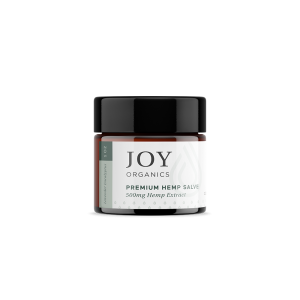 |
Which brings up a side note — when receiving a massage, generally an oil is used on the entire body. This is a great opportunity to give your skin some extra love by adding some CBD oil to your massage oil.
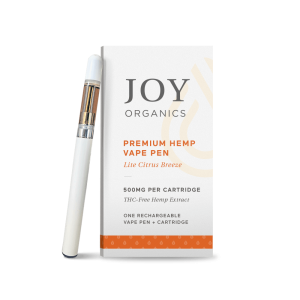 |
There are two devices used to prepare CBD for inhalation — vaporizers and nebulizers. Vaporizers (for example, a CBD Vape Pen) essentially heat a CBD oil preparation to a temperature where it evaporates into a gas. These are very popular and easy to find. Nebulizers simply convert a solution containing CBD into a mist or cloud and are less common at this time. |
|
Nebulizers provide the added benefit of providing a measured serving, whereas delivering an exact serving size of CBD using a vaporizer is trickier. This is because most vaporizers — or vape pens, as they are commonly referred to — are not designed to vaporize an exact amount of solution. A lot depends on how big a puff a user takes and how deeply it is inhaled. |
 |
Getting Started With CBD Oil
CBD oil is not a product on which you should skimp on quality. You need a trusted manufacturer that makes CBD oil products that are rich in natural CBD and terpenes.
Also, a recent survey by the Brightfield Group of CBD products found that a full 40% of CBD products on the market do not contain the amount of CBD listed on the label.
With all these CBD oil producers flooding the market with new products, it can be difficult to know who to trust and where to find the highest quality CBD oil.
The good news is that a reputable company will gladly provide this information. If it’s not touted on their website, then you can use their contact form to inquire about their hemp source, extraction method and the source of other ingredients. If a company will not provide you with this information, then simply rule them out. There are plenty of respectable, high-quality CBD oil makers out there.
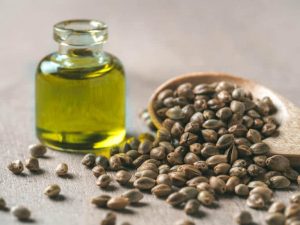 |
Hemp is farmed all over the world. The U.S. is only recently starting to rebuild its hemp industry after a century of prohibition. However, the U.S. produces some of the finest quality cannabis and hemp products in the world. It’s important to understand that not all hemp is created equal. Industrial hemp is primarily grown for its seeds and fibers and is not bred to produce high levels of cannabinoids and terpenes. PCR hemp, on the other hand, was specifically cultivated to be rich in cannabinoids and terpenes. |
In order for a CBD product that is made from industrial hemp to contain the same concentrations of cannabinoids and terpenes as CBD oil made from PCR hemp, industrial hemp CBD must be further refined, removing or destroying many of the naturally occurring beneficial compounds.
If a manufacturer specifies that their CBD was extracted from industrial hemp, then it’s safe to assume that the product is either lower in CBD and terpenes than a product made with PCR hemp, or has been further processed and has lost some of its natural essence. Finding a company whose products are made with PCR hemp is highly desirable.
The lowest quality CBD oil products are usually produced in Asian countries such as China, where quality standards are far lower. CBD oil products produced in China are often made from strains of industrial hemp which are not rich in cannabinoids and terpenes. They are often extracted using cheaper methods that are harsh and can actually destroy cannabinoids and terpenes. They may contain toxic pesticides which are illegal in the U.S. or may be contaminated with molds and other biological toxins.
Although raw and refined pure hemp extract is available, the vast majority of CBD oil products contain additional ingredients such as vegetable oils or other essential oils.
All the rules mentioned above apply here. Products produced in the U.S. are preferred. Products produced in Western Europe may also be of high quality, and product made elsewhere are quite often of lower quality.
The ingredients used can also be telling when determining whether a company is trying to cut corners. Oils such as hemp seed oil, coconut oil and almond oil are generally healthy and of high quality. If a product contains ingredients that you can’t pronounce or that sound like chemicals, then the manufacturer is probably trying to cut corners.
For example, a product known as polyethylene glycol is often used in CBD vape oils. This is the same stuff found in your car’s radiator. Although it has been approved for consumption by the FDA, there is evidence that it may irritate the lungs.
One exception to the can’t pronounce rule is an oil known as MCT oil. MCT stands for medium chain triglycerides. MCT oil is a natural product made from coconut oil. Coconut oil contains both medium- and long-chain triglycerides. Triglycerides, although sounding like a type of chemical, are simply the main constituent of human body fat. Without going into a biology lesson, let it suffice to say that MCTs are easier for the body to process than raw coconut oil.
There are other exceptions to the rule. When in doubt just do an internet search on the ingredients in question and you’ll usually be able to determine fairly quickly whether or not a particular ingredient is safe and healthy.
 |
Another factor to consider is third-party lab testing. Most serious manufactures will send their products out to testing labs to determine whether or not they contain any contaminants and also to measure the levels of cannabinoids in the product. Because different strains and crops produce different levels of CBD, CBD oil can vary in potency from one batch to another. Any good manufacturers will want to know exactly how much CBD is in their products. |
Many top manufacturers will provide the lab reports for the exact batch of products being sold. If one of the makers you are considering does offer this information, give them extra points.
There are some smaller, more obscure companies which produce very high-quality CBD but may not have much in the way of reviews. Don’t necessarily rule them out. Use the methods above to determine if they will make the cut.
As we mentioned above, products produced in areas of the world other than the U.S. or Western Europe are usually of lower quality. There are plenty of great U.S. CBD oil producers to choose from, so it’s best to stick with U.S.-made products.
You may have heard on the news about some people in Utah becoming seriously ill as a result of using CBD products which contained synthetic CBD — that is CBD produced in a lab instead of in a hemp plant. We can’t stress enough how dangerous these products are. Stay away from them at all costs.
To wrap things up, let’s summarize the important points that you should take away from this document.
If you’re taking CBD oil for health maintenance, you should be taking lower servings of CBD. Anything over 50 milligrams a day may be more than you need. You may only need 25 milligrams or less per day.
However, you may be using CBD for a reason other than wellness support and need a greater serving. Or you may be taking medications with which CBD will interact. There may be other considerations. You really need to discuss your decision with a qualified medical professional who is well-versed in the use of CBD in order to determine your ideal serving.
Finding the right product for you from a high-quality maker is paramount. Once you choose a trusted brand and a particular product, stick with it for a while so that you can truly gauge its effectiveness.
We hope that you’ll take a good look at Joy Organics and consider us as your preferred source for high-quality CBD oil products. We use only PCR hemp to produce our CBD oil. We use only phytocannabinoid-rich oils in our products, extracted using supercritical CO2.
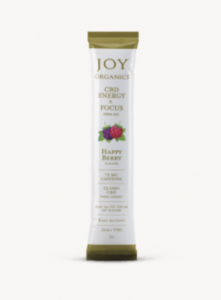 |
Our capsules, CBD Energy Drink Mix and dog treats are made using water-soluble hemp extract powder, which gives these products a higher bioavailability than that of standard products. We use a patented process to extract all residual THC from our products, providing a THC-free product. And we add only the highest quality ingredients to our products. Finally, all of our products undergo rigorous testing to assure they are free from any kind of contamination and have accurate CBD levels. |
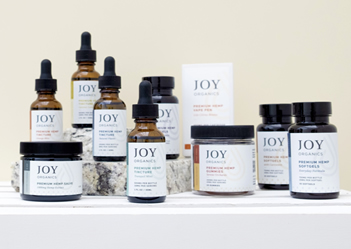
JOY ORGANICS
All Natural Goodness
__

RETAIL LOCATIONS
Visit One of Our Stores
__

